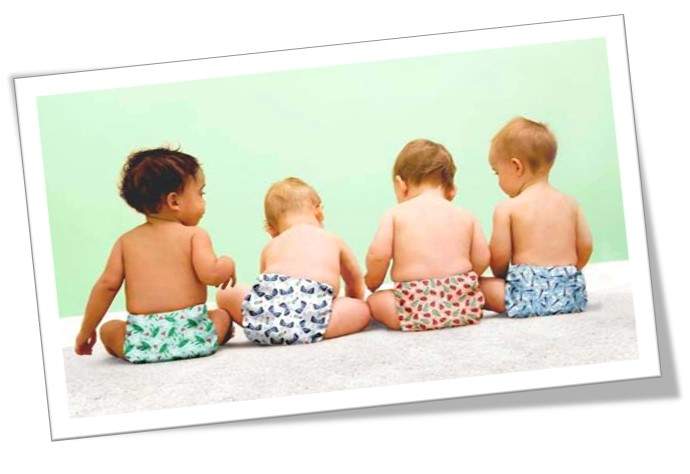Are reusable nappies for you?
Have you considered reusable nappies but aren’t sure where or how to start? We've put together some key information to help you learn more and see if it's the right fit for you and your family.

Environmental benefits
Did you know that a child will use approximately 6,000 disposable nappies before they turn 3? Assuming 2 wipes are used during each nappy change, that’s also around 12,000 disposable wipes going to landfill per child.
Last year there were 850 babies born to families living in Bayside which means roughly 1.7 million disposable nappies per year heading to landfill, or 5.1 million disposable nappies by the time those babies turn 3. It is also estimated to take up to 150 years for one disposable nappy to break down.
Economic benefits
The cost of disposable nappies adds up. You might not notice the cost in your weekly grocery bill but disposable nappies cost on average $3,000 per child.
Depending on the cloth nappies you choose, you may spend between $0 (if you use second-hand ones) and $800 to build your reusable nappy stash. This could save you around $2,000 or more per child.
It doesn’t have to be all or nothing
You may choose to use reusable nappies only during the day, and not overnight. Or you may only want to use them part-time, or only cloth wipes. Every time you reach for a reusable product you are making a difference.
Remember that using just two reusable nappies a week will divert 100 disposable nappies from landfill each year - So take your time and figure out what works best for you and your family.
What types of reusable nappies are available?
Below you will find a stack of information on reusable nappies.
With lots of options available you will be able to find a reusable nappy style that suits your needs, budget and baby.
Pocket nappies
This nappy style is easy to use and looks similar to a disposable nappy. A stay dry layer and waterproof cover are sewn together forming a pocket, where an absorbent fabric ‘insert’ is placed inside.
All-in-one nappies
The stay dry layer, absorbent fabric and waterproof layer are all sewn together. These are simple to use as there is no assembly required. Using a dryer is not recommended with this style of nappy as the absorbent components can’t be detached from the waterproof layer.
All-in-two nappies
For this style the stay dry layer is sewn to an absorbent insert, which attaches to a waterproof cover with press studs (commonly known as ‘snaps’ or ‘poppers’).
Hybrid nappies
Hybrid nappies are not a separate style of cloth nappy, instead the term refers to a nappy which has more than one style – it could be both a ‘pocket’ nappy and an ‘all-in-two’ nappy. Or, it can be a nappy where some parts are reusable and some parts are disposable.
Hybrid nappies will often come with a reusable cover but a disposable absorbent insert, making it a great option for camping or for those using shared laundry facilities.
Two-part systems: Separate nappy and cover system
Flats
Prefolds
Prefolds are usually made from cotton or bamboo fabric and are rectangle-shaped with additional layers of absorbency sewn in the centre. They can be folded and wrapped around the baby, then secured with a stretch rubber fastener, or folded into a rectangle ‘pad’ shape and laid into a waterproof cover.
Fitted
Fitted nappies are sometimes referred to as a ‘shaped’ nappy where the whole nappy is made of absorbent fabric and the folding has been done for you. These need a cover added to make it waterproof. These are great for overnight-use as they are very absorbent.
Washing reusable nappies and wipes
Detergent choice
Check out the Detergent Index available at www.cleanclothnappies.com
Remove soiling
- Rinse poo and pull out inserts
- Put in a dry basket
Pre-wash
- Wash in 40-60 degrees Celcius water
- 30-minute cycle
Main wash
- Wash in 40-60 degrees Celcius water
- 2+ hour cycle
Dry
- line dry or if using a dryer, use on low heat
For more information
For more information, you can visit: